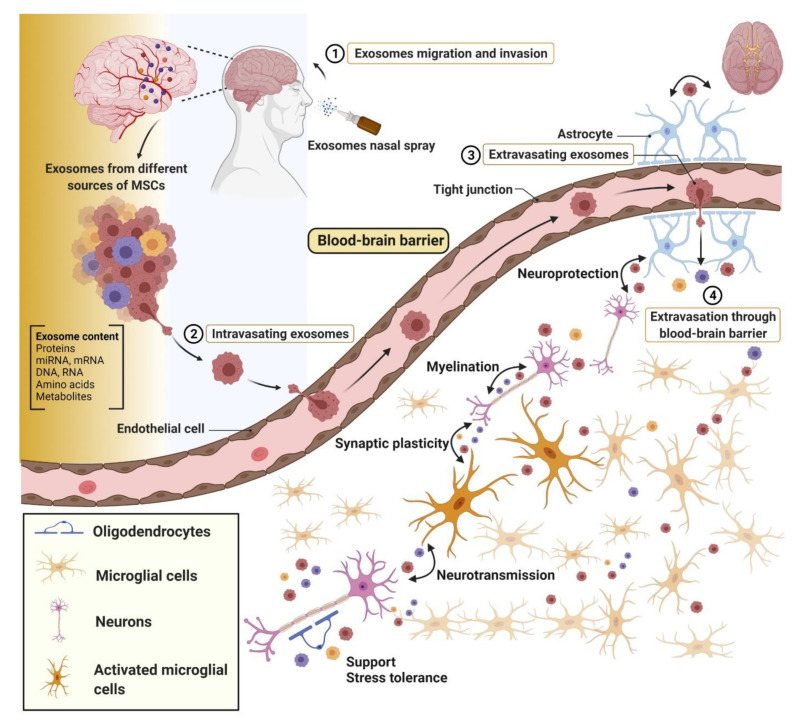Figure 6.
Schematic representation of functions of exosomes in neural cell communication. Exosomes released from different types of MSCs such as human umbilical cord, adipose tissue, bone marrow, and neural stem cells perform several investigated and suggested biological functions. Exosomes delivered via intranasal, intravenous, or other routes can migrate to the brain and penetrate the blood brain barrier. From there, the exosomes can enter general circulation and arrive at far off targets. Conversely, exosomes can travel across the blood brain barrier from inside the blood vessel into the central nervous system and be taken up by neurons and glial cells. Exosomes contain diverse contents (as depicted in Figure 1), that can influence inflammation, misfolded proteins, damage, and disease. In injury states such as TBI or stroke, exosomes interact with synaptic activity and neural survival, facilitating neurite outgrowth, and can promoting myelination and blood brain barrier repair.

